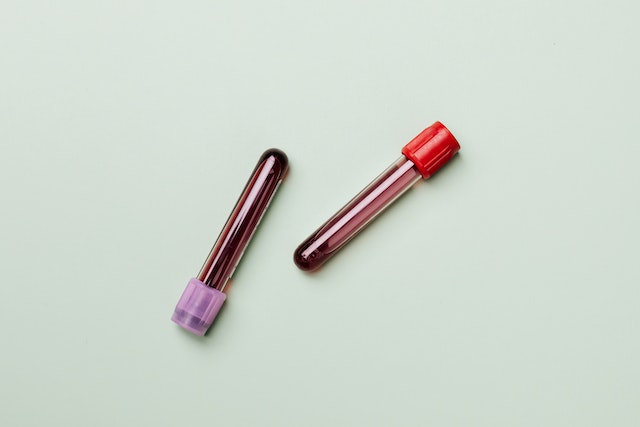
Why do people have different blood types? Scientists don’t know why humans have different blood types, but a good hypothesis is that they protect us as a species against different diseases.
We have approximately 4.5 to 6 liters of blood, depending on our size. Blood is generally about 10% of our body weight. Blood is made up of red blood cells, white blood cells, platelets, and a yellow plasma. Red blood cells make up 40% of the blood. About 5 billion are produced every hour by our bone marrow. One red blood cell lasts about 120 days. White blood cells make up about 1% of the blood volume, but production of them increases when the body has an infection. They are also made in the bone marrow. Platelets float around in the blood and control bleeding when the body is injured. There are about 25,000,000 of them in every milliliter of blood. And plasma makes up the rest. It is the liquid that the rest float around in. It is made up of water, proteins, sugars, hormones, and salts.
There are four different blood types (A, B, AB, and O), The difference between the blood types is the antigen and the antibodies. An antigen is a protein molecule found on the surface of a red blood cell. Nobody knows what the antigens are for. If they are missing from the blood cell, nothing happens. There is a theory that they evolved to make us resistant to a parasite that no longer exists. There is another antigen called the RhD antigen. If you have this antigen, then your blood is RhD positive and if you don’t have it, your blood is RhD negative. (Rh is “Rhesus factor” and D is the “D antigen” protein.) That brings the number of different blood types up to eight.
Our blood also has different antibodies based on the blood type. They float around in the plasma. These antibodies are activated when a red blood cell with a different antigen is detected. The antibodies trigger an immune system response and the blood is attached in the same way that any foreign substance in the body would be attacked.
O type blood is the exception to this. O type blood cells don’t have any antigens. If you have O- blood, then you have no antigens and also no Rh antigens. That means your blood won’t trigger the antibodies in any other type of blood and you are what is known as a universal donor. O type blood is the most commonly used in blood transfusions and the most needed blood from blood donors.
Karl Landsteiner realized there were different blood types in 1900. People had tried blood transfusions for centuries. They started by infusing animal blood into people, which always killed them. Then they tried transfusing human blood into people, which killed 6 people out of 10. But nobody knew why. Until 1900. Karl Landsteiner worked out that mixing different types of blood causes the blood to clump together, causing fatal blood clots.
Scientists in the 1990s found that a gene called ABO is responsible for different blood types. Small mutations can mean you have A, B, AB, or O blood. They also found that primates have a similar gene. All of these genes come from a shared ancestor, about 20 million years ago. That means humans have had different blood types for over 20 million years.
So, why do people have different blood types? We all have the same skin cells, organs, eyes, and so on, so why would we have different blood types? What advantage would that give us? It turns out that different blood types are more susceptible to different diseases. For example, people with A are more likely to get gastric cancer, and people with type O are less likely to catch malaria. There are many other viruses, bacteria, and diseases that have different effects on different blood types. This might not help the individual human, but a variety of blood types will protect the species as a whole and help the species to flourish. One disease would never be able to wipe out the whole species. And that is the advantage different blood types bring. And that is what I learned today.
Sources
https://www.oneblood.org/about-donating/blood-donor-basics/what-is-blood/
https://www.nhs.uk/conditions/blood-groups/
https://www.livescience.com/33528-why-blood-types-exist-compatible.html
https://www.ncbi.nlm.nih.gov/books/NBK2264/
https://www.medicalnewstoday.com/articles/218285
https://professionaleducation.blood.ca/en/transfusion/publications/blood-basics
